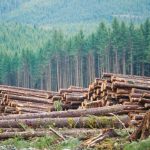 A study conducted by Imperial College London highlights a crucial aspect of community dynamics concerning forest resources: perceptions of external resource theft can drive communities to increase their own harvesting activities.
A study conducted by Imperial College London highlights a crucial aspect of community dynamics concerning forest resources: perceptions of external resource theft can drive communities to increase their own harvesting activities.
This research underscores the pivotal role of well-defined boundaries around common-pool resources in ensuring their sustainable management. Common-pool resources like forests, fisheries, and groundwater demand effective governance to mitigate over-exploitation and environmental degradation. While the importance of strong boundaries in facilitating resource management was recognized, the precise mechanisms behind this phenomenon remained unclear.
The role of boundaries
In collaboration with mangrove-dependent communities in Tanzania, the study unveils a multifaceted role of boundaries. Beyond merely demarcating territory, boundaries foster sound conservation practices among community members. In the absence of secure boundaries, communities are vulnerable to theft from neighboring groups. The study reveals that when communities perceive such theft as a catalyst for deforestation, they are inclined to escalate their own harvesting activities, potentially sparking a detrimental ‘race to the bottom’.
Conversely, when boundaries are firmly established, communities are empowered to make collective decisions that prioritize sustainable harvests, thus promoting long-term resource stewardship. This underscores the critical importance of boundary enforcement in fostering community-led conservation efforts and ensuring the resilience of common-pool resources.
“For lots of natural resources, we want to keep people out because of the direct damage that it might cause to the ecosystem,” the researchers explain. “But what we show is that secure boundaries can actually have much greater effects than just stopping the direct harvest from outsiders: they can actually shape the culture of sustainable resource management.”
The role neighbors play
The findings unearthed additional factors influencing forest conservation efforts. One notable discovery was the response of neighboring communities to the creation of government-sanctioned protected areas in 2015.
In a proactive move, certain neighboring communities initiated self-organized agreements to forestall the spillover effects of tree-cutting activities from these protected lands into their adjacent forests. This grassroots initiative demonstrates the proactive measures communities can take to safeguard their local ecosystems in the face of external pressures.
“In the end, what our study shows is that awareness of damage to critical natural resources is not enough to spur action, particularly when we think ‘others’ are causing the damage,” the authors conclude.
“This insight helps us understand the drivers of environmental and cultural change – and how we can design successful conservation actions based on them.”